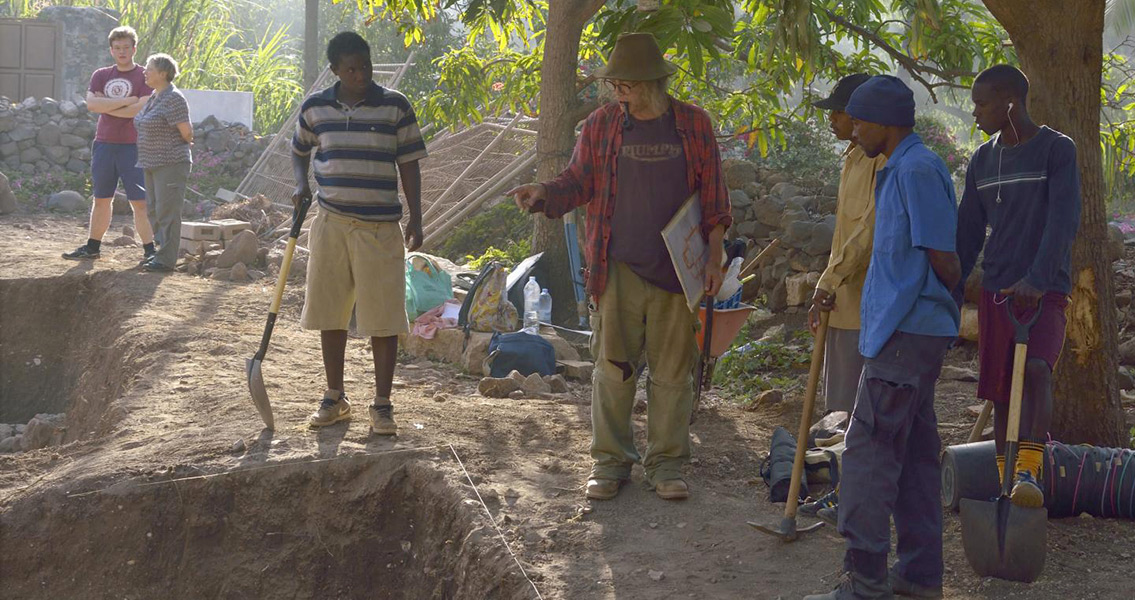<![CDATA[University of Cambridge archaeologists have unearthed the earliest known European church in the tropics on one of the Cabo Verde islands, 500 km off the coast of West Africa. Working on the excavation and conservation project since 2007, the archaeologists from the University of Cambridge and the Cambridge Archaeological Unit (CAU) have finished preparing the building for public display. "We've managed to recover the entire footprint-plan of the church, including its vestry, side-chapel and porch, and it now presents a really striking monument," said Christopher Evans, director of CAU, in a press release from Cambridge University. "Evidently constructed around 1500, the most complicated portion is the east-end's chancel where the main altar stood, and which has seen much rebuilding due to seasonal flash-flood damage. Though the chancel's sequence proved complicated to disentangle, under it all we exposed a gothic-style chapel," Evans explained. In the fifteenth century the Portuguese established a stronghold on the Cabo Verde islands, using them as a base to commence the first European commerce in the region of West Africa south of the Sahara desert. By the sixteenth century this initial commercial activity had evolved into the Atlantic Slave Trade, with the Cabo Verde islands right at the heart. Named the church of Nossa Senhora da Conceição, it is the oldest colonial building discovered in sub-Saharan Africa, the scientists say. The building was unearthed in the remains of Cidade Velha, the former capital of the Cabo Verde Islands, and at one point the second biggest city in the Portuguese Empire after Lisbon. According to a press release from the University of Cambridge, the oldest remains from the church of Nossa Senhora da Conceição date to 1470. A further, larger construction followed in 1500, with evidence of subsequent extensions being built and the church being re-clad with tiles imported from Portugal. In this way, the expansion of the church over the fifteenth and sixteenth centuries maps out the intensification of commercial activity in the Cabo Verde islands, as slaves were 'funneled' through the islands before being shipped off around the world. "The excavation reveals these global connections as the finds include fine ware and faience from Portugal, German stoneware, Chinese porcelain and pottery from different parts of West Africa." explained Professor Marie Louise Stig Sørensen from the University of Cambridge. For 300 years slaves were trafficked through Cidade Velha. "It's a profound social and political story to which these new archaeological investigations are making an invaluable contribution," said Sørensen. A cemetery dug into the floor of the church has also been discovered by the research team. Tightly packed, it is estimated that around 1,000 people were buried there before 1525. Initial studies on the graves show that half of those interred under the church were African, with the rest of European origin. An excavation is now being planned to perform isotope analysis on the remains, to learn more about the city's history during the origins of the slave trade. "From historical texts we have learned about the development of a 'Creole' society at an early date with land inherited by people of mixed race who could also hold official positions. The human remains give us the opportunity to test this representation of the first people in Cabo Verde," said Evans in the press release. In 1975 Cabo Verde became an independent country. The research team hope that their work can help the relatively new nation come to terms with its turbulent history. As Sørensen remarked, "Cabo Verde is a young nation in many ways, and it needs its history to be unearthed and accessed so it can continue to build its national identity," Image courtesy of Cambridge Archaeological Unit]]>
Oldest Church Unearthed From the Heart of the Slave Trade
